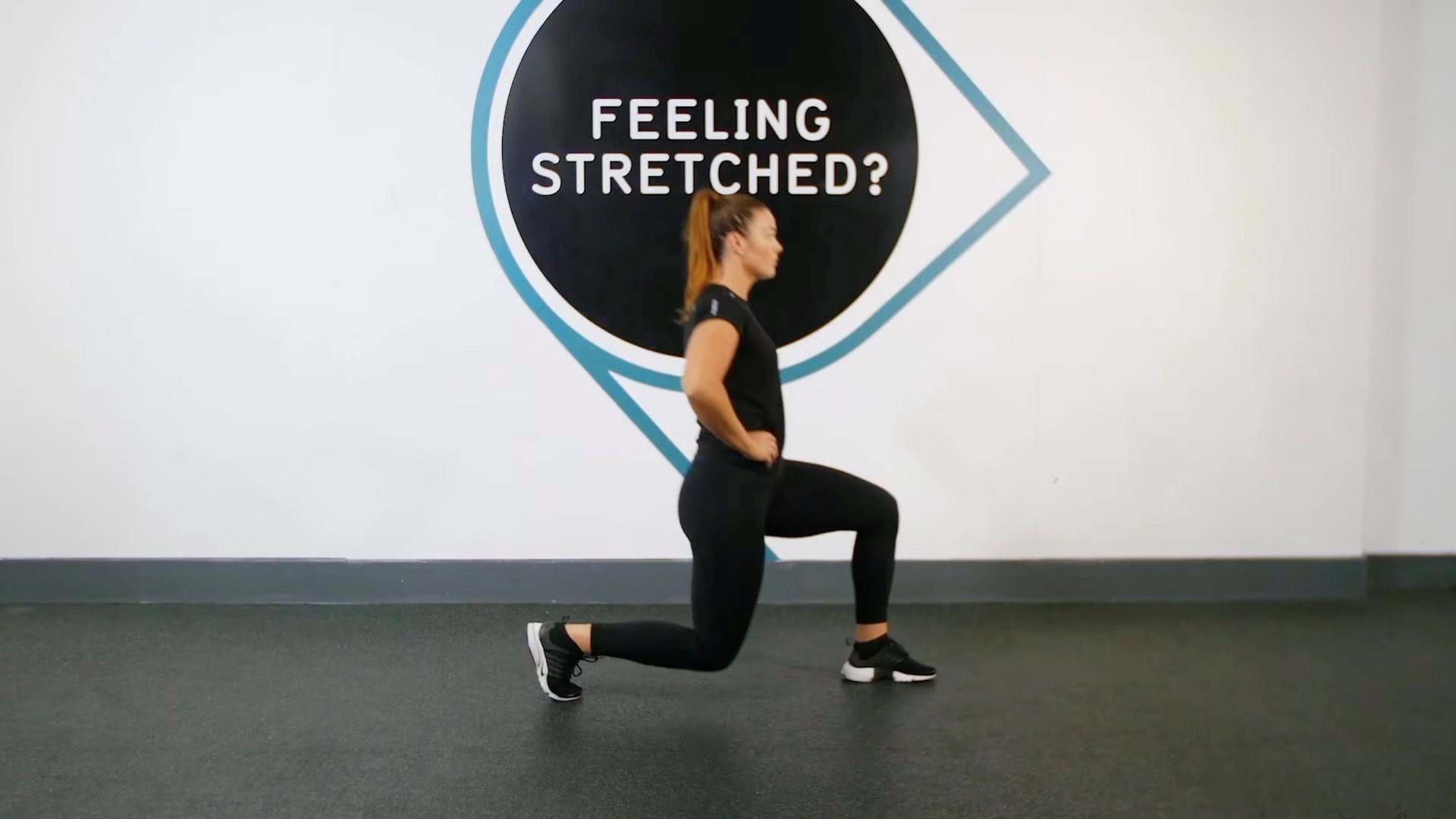Lunges
What is a lunge?
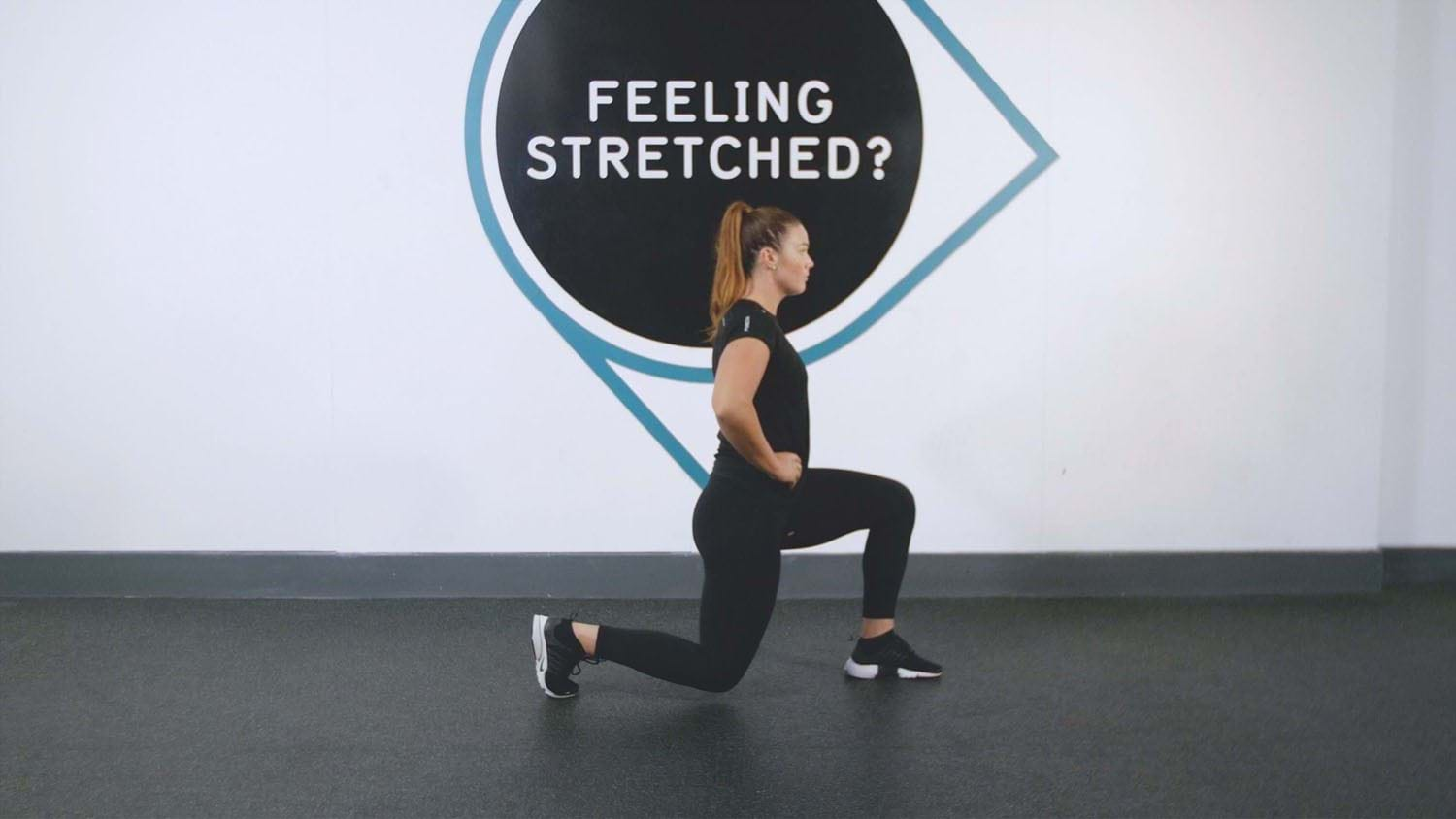
When you're looking to target your legs and bum, you can't beat a lunge. They're safe and easy to perform, you can do them anytime, anywhere, and they work out pretty much all the muscles in your lower body. Key muscles targeted include gluts, quads, hamstrings, calves and core.
Known as a unilateral exercise, lunges work out one side of your body at a time. This helps improve your overall stability, giving your better coordination and balance to perform everyday activities.
Another positive of training one side of your body at a time is it allows you to ensure both sides of the body are getting an equal work out, rather than letting your stronger side do more of the work.
Lunges are particularly effective in giving your core muscles a work out as it takes some effort to remain upright as you perform the lunge. A stronger core will go some way to improving your posture and warding off lower back pain.
As the exercise targets large muscle groups, it can help give your metabolism a boost which will aid weight loss and tone up key target areas on your legs and bottom.
Before you plunge right in and give it a go, be sure to check out our top tips and our guide to performing some of our favourite lunges.
COMMONLY ASKED QUESTIONS ON LUNGES
Lunges primarily work the following muscles: quadriceps, hamstrings and glutes but it also involves using you calves and core muscles.
Lunges work the quads, hamstrings and glutes. To target the hamstrings more, you can try leaning forwards. This will also further activate the glute medius. If you want to target your quads, holding your upper body in a more upright position will target this area more.
Although lunges can help to build your leg muscles, it's unlikely that you will build notably bigger thighs from lunges alone. If you want to increase the size of your thighs, train your quads and hamstrings at least twice a week, making sure to provide enough training stimulus each week, for example by using heavier more challenging weights, and eat enough food and protein to allow muscle synthesis.
It is possible to do lunges everyday provided they’re performed at a training intensity where you’re not overtraining. That said, a more optimal way to train would be training the leg muscles to a higher intensity twice a week, with at least a day's rest between workouts to allow your body to recover and repair its muscles and tissues.
Lunge exercise tips
- As you lunge forward remember to keep the weight in your heel and your knee directly above your toes.
- Keep your back and shoulders upright as you lunge.
- Keeping your chin up and head facing forward will help.
- If you're new to lunges you might find it easier to start with just your bodyweight, and gradually progress to weights once you get comfortable with the movement.
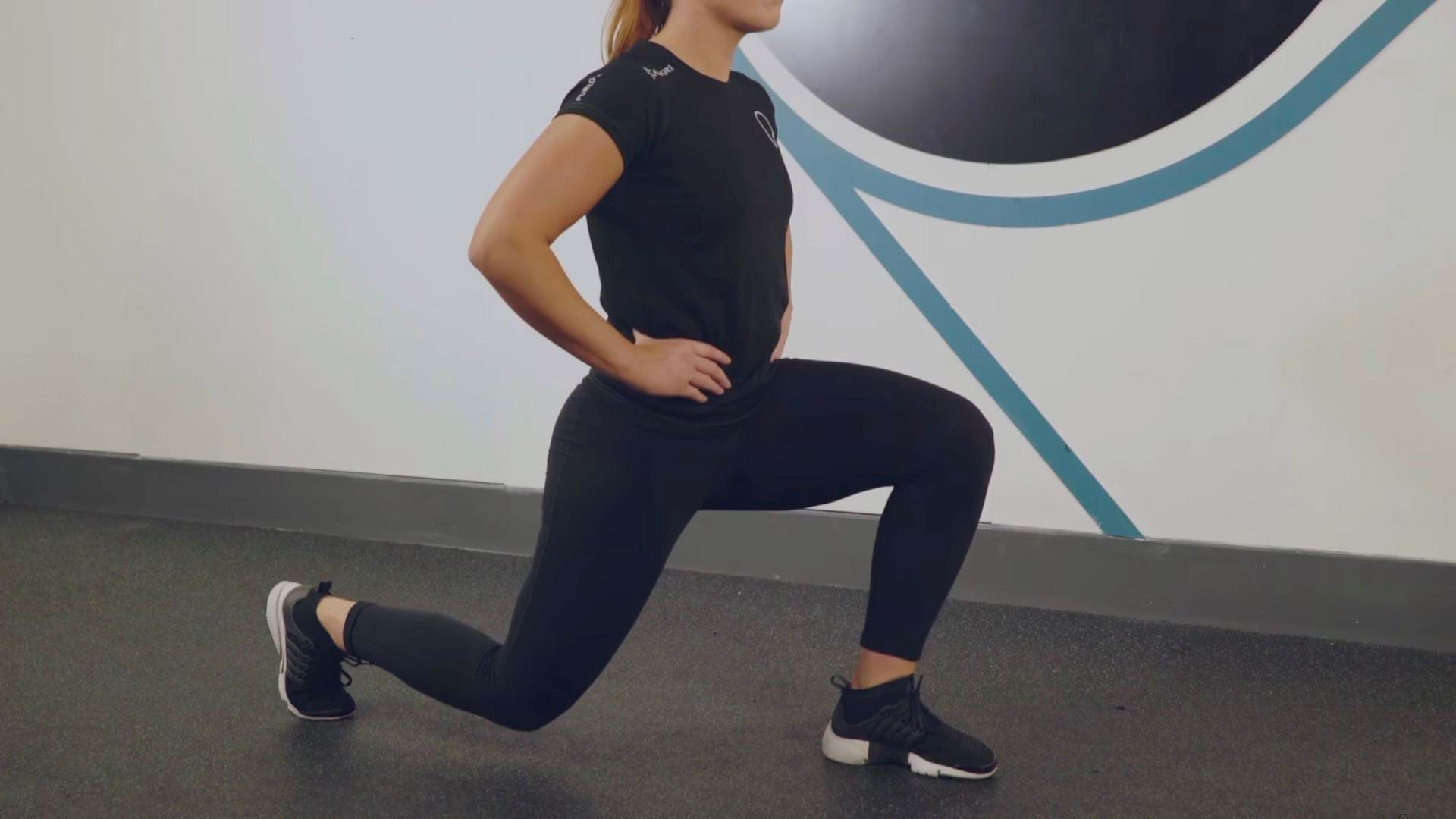
In reverse lunges, the foot is stepped backwards instead of forwards. This variation challenges the glutes and quads to a greater degree.
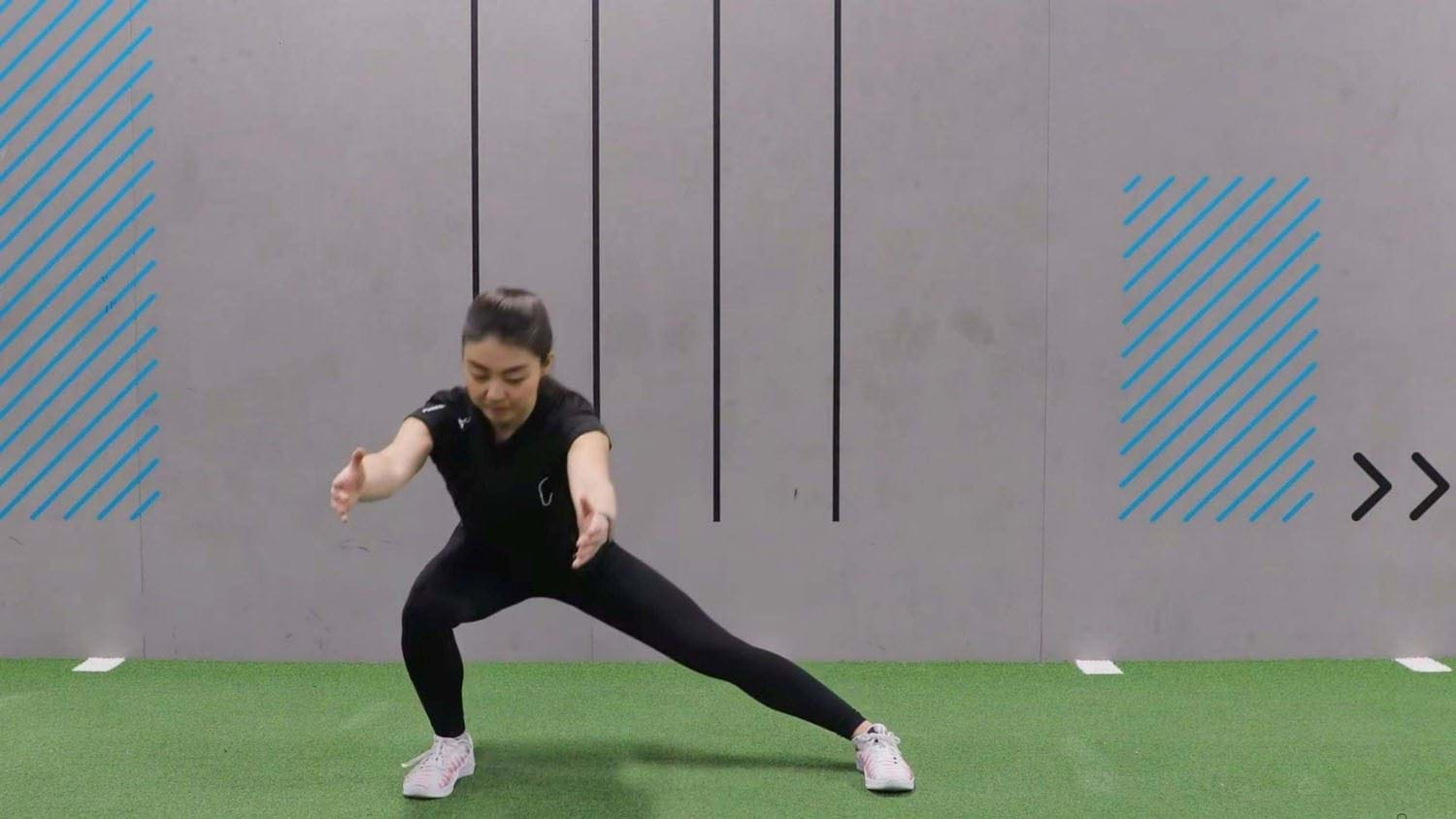
Lateral lunges, also known as side lunges, places a greater challenge on the abductors and adductors than other lunge variations.
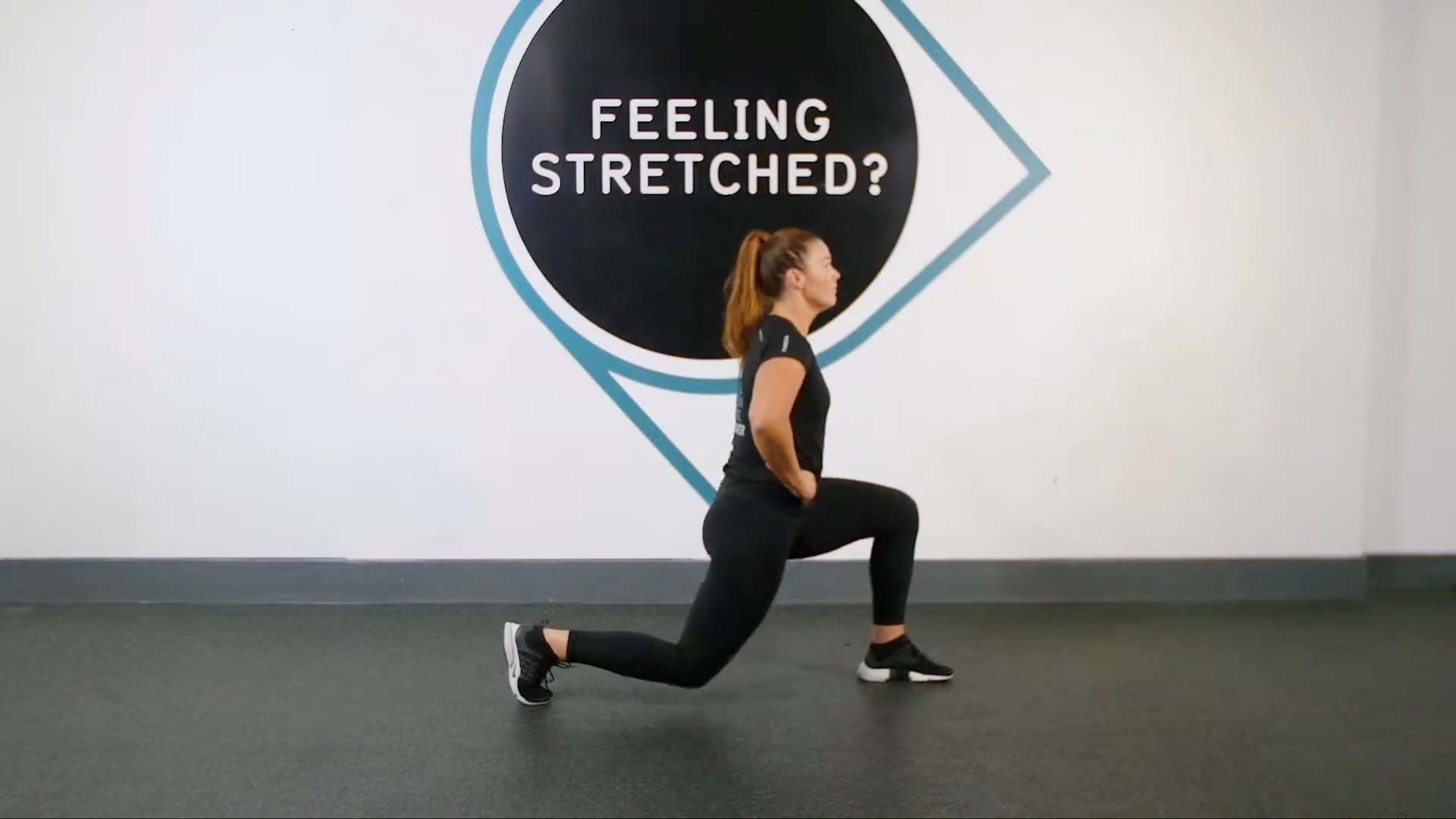
Jumping lunges are a plyometric variation of the lunge and can help to build power and speed, as well as strength.
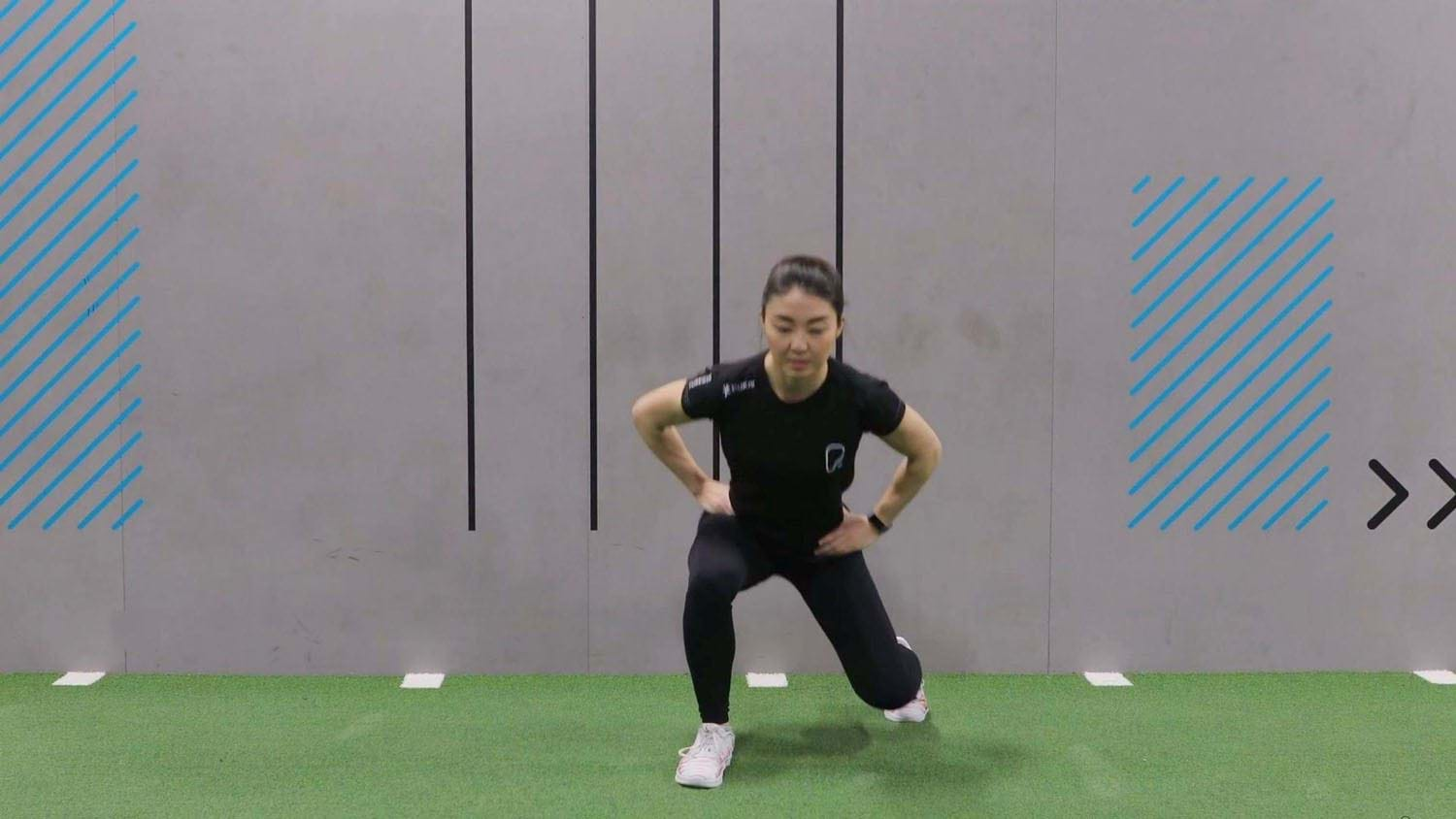
Clock lunges combines forward, reverse, and side lunges to challenge the lower body muscles from multiple angles.
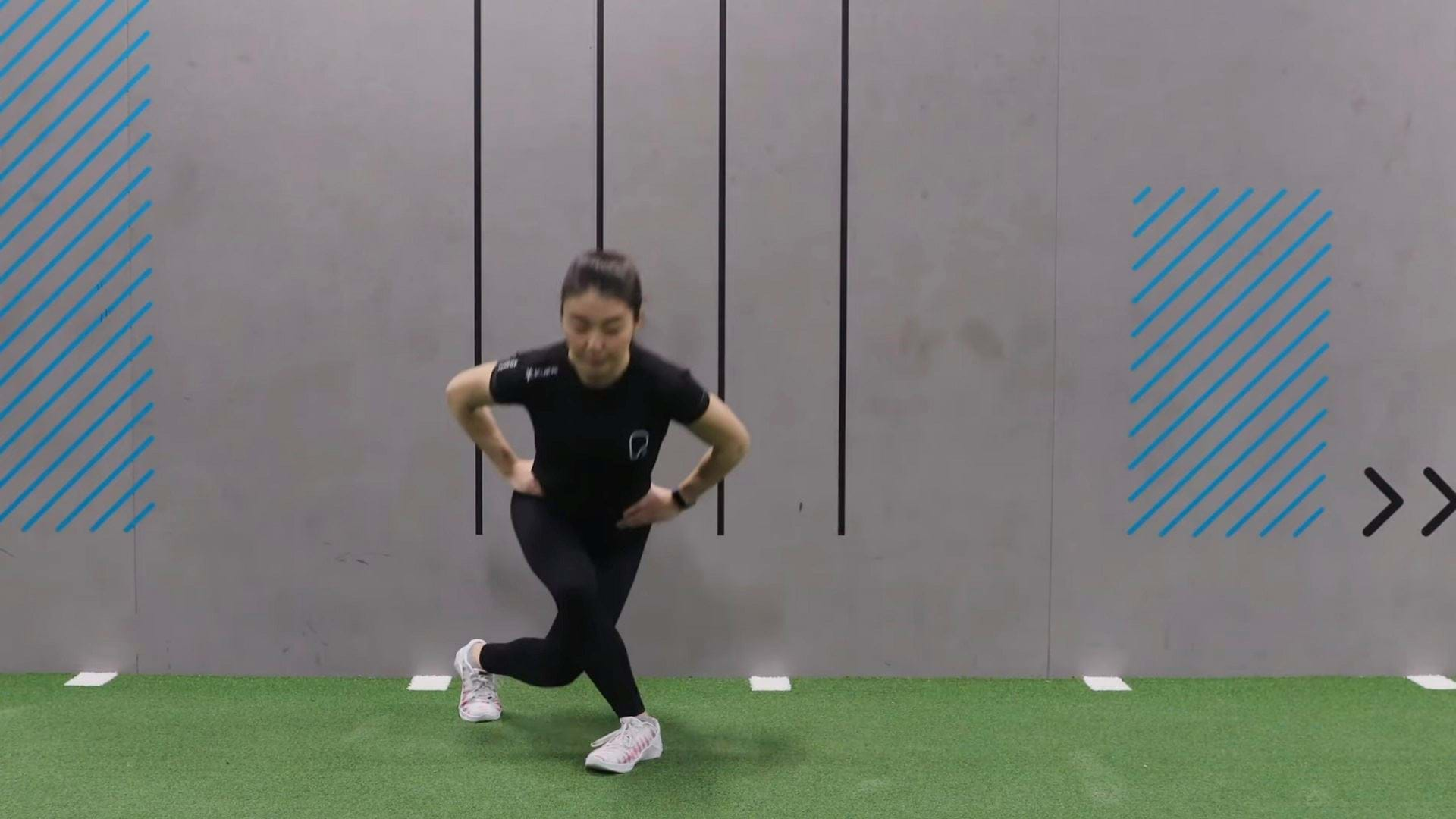
Curtsy lunges are a variation of the reverse lunge where the leg is crossed behind the front leg, targeting the glutes to a greater degree.
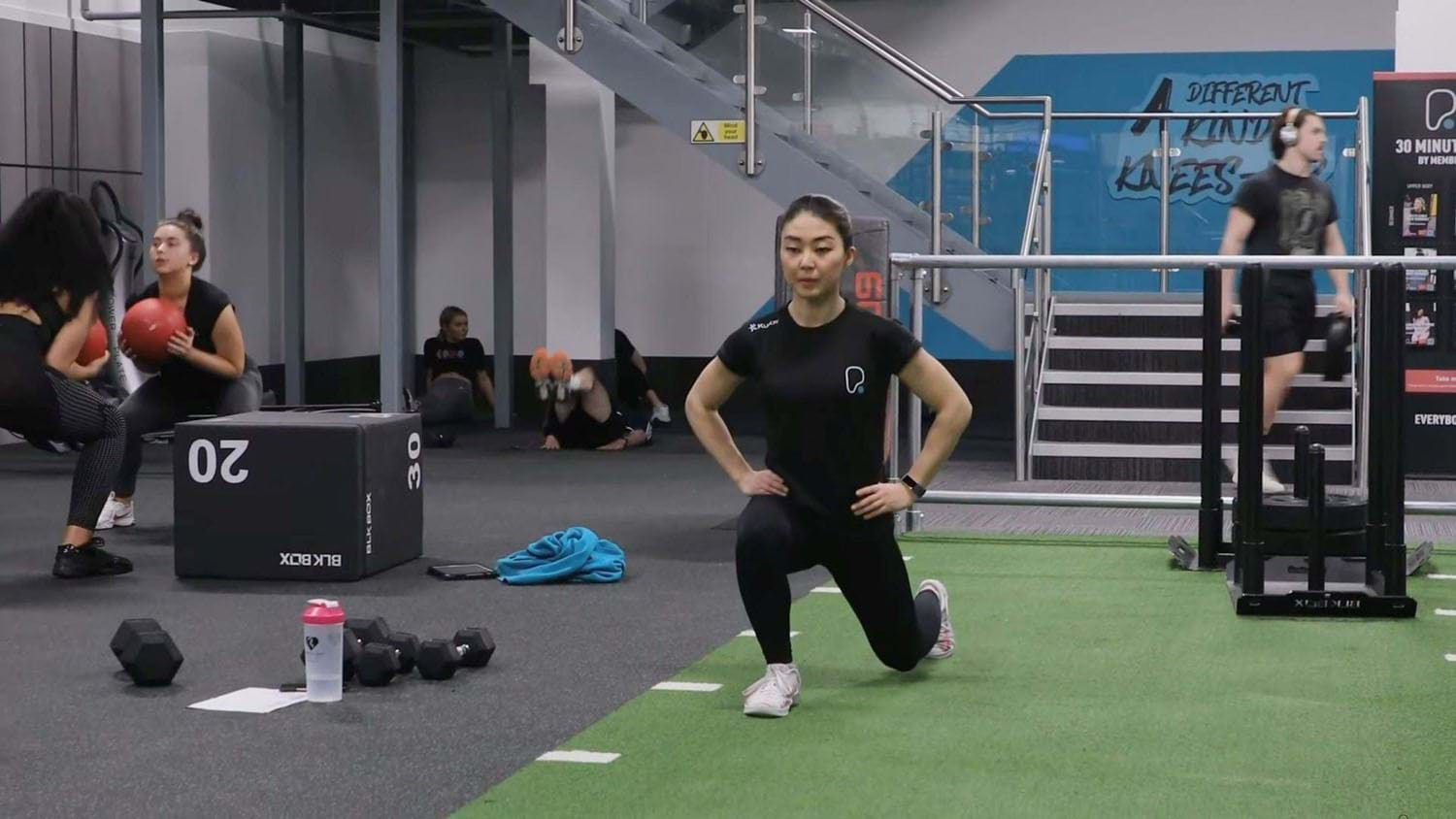
Walking lunges are more challenging for balance and place more demand on the core and stabilising muscles.
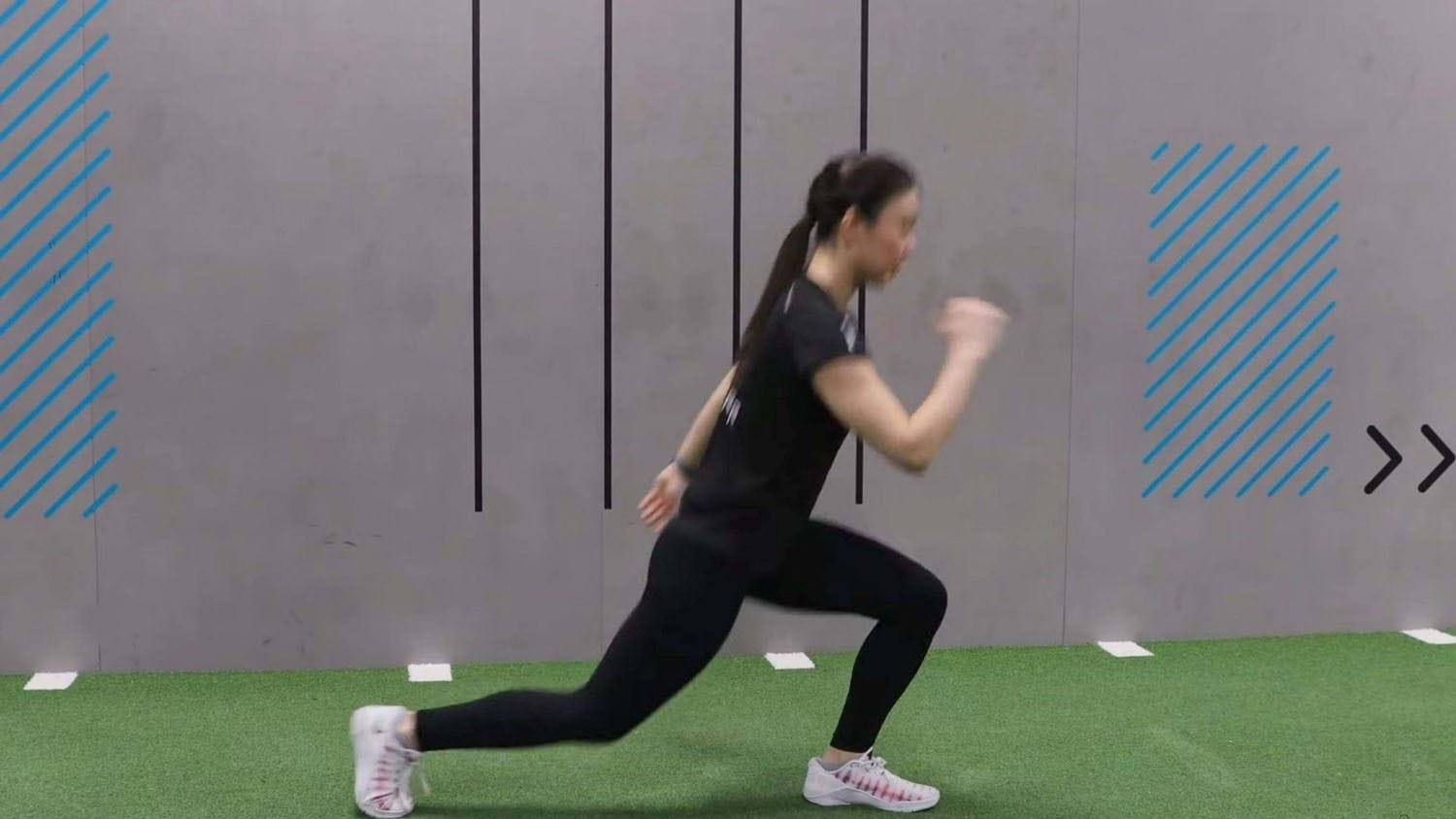
Sprinter lunges are a fast paced lunge variation that can increase lower body strength, speed, and power.
If you’re not sure if any of the above exercises are suitable for you, please consult your doctor before you start it. Need guidance on how to perform the exercise? Ask a personal trainer at your gym.
